By Molly Patrick
Mar 1, 2016,
By Molly Patrick
Mar 1, 2016,
One of the most rad things about eating a Whole-Food Plant-Based diet, aside from satisfying shits on the daily (yes, that’s plural), is the range and amount of vitamins, minerals, and phytochemicals that you get from eating whole plant foods.
There’s no other way of eating that provides the nutrient density that the Whole-Food Plant-Based diet provides, simply because whole plant foods are packed full of vitamins, minerals, phytochemicals and fiber.
Getting all of the vitamins and minerals that your body needs when you’re a plant muncher is easy as long as you’re eating a wide range of whole plant foods and taking a vitamin B12 supplement and possibly a D supplement (more on this during the workshop).
Meaning, don’t make and eat the same shit over and over. Except of course Tahini Crack dressing. Make Tahini Crack ALL the time.
Otherwise, mix it up. Incorporate kale one day and then reach for collard greens the next. Make pinto beans one week and garbanzo beans the next. Stock up on grapefruit, berries, apples, and kiwis, instead of just bananas. Throw buckwheat and farro into the mix instead of brown rice and quinoa over and over again. Top your oats with pumpkins seeds or sunflower seeds sometimes instead of walnuts every single time.
The more variety, the better. And this makes sense because each plant food is made up of a different chemical structure and has different vitamins, minerals and phytochemicals. Some veggies are really high in vitamin A (I’m lookin’ at you, carrots), whereas others shine in the K department (hello parsley). Some foods are bursting with potassium (play on, white beans), and others are calcium all stars (holla, collard greens).
This is exactly why I don’t cream my pants over “superfoods”. All plant foods are superfoods, and it’s the combination of lots of different nutrients interacting with each other in your beautiful bod that ignites their superpowers.
Plus, $25 for a bag of Goji berries is a fucking rip off and totally unnecessary.
Here’s the deal. There are a few important plant foods that even the plantiest of eaters tend to forget about. These foods aren’t more miraculous than other plant foods, they are just the ones that most people skim over and don’t eat on a regular basis but should, because of their unique nutritional profiles.
These foods are:
Today I’m putting on my bikini and swimming with seaweed. I’ll cover the others in the next few weeks.
Let’s dive in.
Here’s what you should know about seaweed aside from the fact that sea veggies are delish.
- They contain certain phytochemicals that land veggies don’t.
- They have anti-cancer properties, especially against breast cancer. One sheet of Nori a day may cut the odds of breast cancer in half. Studies have shown that the more seaweed we eat, the less estrogen we have in our system, which may lower breast cancer risk.
- They help lower blood pressure, especially wakame.
- They’re loaded with vitamins, including B, C and A, plus minerals, including iodine, a trace mineral that’s critical for thyroid health. Dairy eaters get plenty of iodine because iodine is found in milk and milk products. This is because iodine disinfectants are used to disinfect milk tanks and iodine leeches into the milk. Screw that. Get your iodine from sea veggies and be done with it.
- It’s important to note that too much iodine can also contribute to thyroid issues. So just like anything, eat seaweed in moderation and don’t binge on it.
- Seaweed is one of the only plant sources which contains DHA and EPA, long chain fatty acids that are important for cognitive function and depression.
Here are the most common types of seaweed and what to do with them.
1. NORI
Nori comes in flat sheets that are used for making hand rolls and sushi rolls. You can also make gluten free wraps or burritos with them, but keep in mind that unlike tortillas, they’re fragile. Also, once a hot ingredient touches the nori, the nori becomes mushy and hard to eat.
Wrapping cold ingredients in them is the best way to go, or you can eat them as is. I like to make hand rolls out of them because it’s a super fast lunch. I also like to cut strips of nori and add them to salads.
You can buy toasted or untoasted nori. Both are beneficial – don’t overthink it. Once you open the bag, store the remaining sheets in an airtight bag, otherwise they’ll go soft. If they do go soft, either toast them in your toaster or carefully heat them on your stove for a few seconds and they’ll crisp back up.
Seaweed snacks (like the ones from Trader Joe’s) are yummy, but they usually have lots of oil and salt, so try to stick to plain nori as much as possible.
2. DULSE
You can buy dulse in lots of different forms. You can buy the whole leaf, dried, you can buy dulse flakes, granules or powder. I buy the flakes or the powder. The sea flavor is perfect for seasoning chickpea tuna, and other dishes that need a savory, fishy taste.
If you toast a piece of sprouted bread and add avocado, thinly sliced red onion and sprinkle a little dulse flakes on top, you’ll be a happy camper (without actually camping. Thank god). Keep in mind that a little dulse goes a long way – a sprinkle here and there is all you need.
3. WAKAME
Wakame is a type of kelp. Wakame is typically added to miso soup and used for seaweed salad. It comes dried and you have to soak it in cold water for about 10 minutes to rehydrate it. Some varieties of wakame need to be cooked for quite a long time or cooked in the pressure cooker for 5 or 6 minutes. Refer to the instructions on the back of the package before you do anything with it.
The color of wakame after it’s rehydrated should be a deep green color with a hint of brown. If you ever come across pre-made seaweed salads that looks bright, almost fluorescent green in color, skip it because that bright green color is due to added artificial color. This is usually the case with seaweed salads at Asian grocery stores and sushi restaurants.
The star of today’s recipe is wakame, so get ready to have your mind blown like only a vegetable from the sea can.
4. KOMBU
Kombu is a type of kelp that’s typically used to make broth. Kombu also helps us fart less when we eat beans (a fucking win in my book).
Kombu contains enzymes that help break down the raffinose sugars in beans. These sugars are major fart producers and once they’re broken down, we’re able to absorb more nutrients from the beans and we pass less air out of our ass. This is the best example of a win-win that I’ve encountered all week.
Add a 4-6 inch strip of dried kombu to your dried beans when cooking and then discard whatever kombu hasn’t evaporated when they’re done cooking. #easyfartfix
5. HIJIKI (or Hiziki)
Hijiki is not recommended to eat because unlike other sea veggies, it soaks up large amounts of arsenic like a sponge. So although you can buy hijiki at some stores, stick to the seaweed varieties above and skip the Hijiki.
There are lots of other types of sea veggies, but these are the ones that I recommend starting with because they’re the most common and the easiest to find (except Hijiki – don’t eat that one). And remember, don’t go overboard with them because you don’t want too much iodine in your system. Just eat a little seaweed a few times a week and you’ll be good.
Sprinkle a small amount of dulse on your food, eat a nori sheet here and there, make today’s recipe, and add kombu to your beans. Easy peasy.
If you’re worried about radiation on account of the Fukushima nuclear disaster of 2011, I recommend buying seaweed that has been harvested from the North Atlantic region.
This company harvests their seaweed off the coast of Maine and they test the radioactivity levels every year.
It’s also worth mentioning that the health concerns of eating fish due to their mercury and other heavy metal content do not hold true for sea veggies. The reason for this is because of a little something called biomagnification.
Let’s work this smarty pants word out with a quick example.
- Mercury is absorbed by bacteria and phytoplankton.
- Let’s say some small fish come along and they eat the bacteria and phytoplankton because they’re hungry and they need a snack. The mercury then accumulates in their system.
- Then let’s say some larger fish are hungry so they eat those smaller fish. The mercury from those smaller fish then accumulates in their system, increasing the level of mercury in the larger fish.
- This keeps happening until eventually humans eat the fish who ate the fish who ate the fish who ate the bacteria and the phytoplankton. And by the time this fish is consumed by humans, it’s concentration of mercury is really high and it makes its way into the tissue of the seafood eaters.
Seaweed on the other hand isn’t swimming around eating fish, making biomagnification not applicable. Ta-dah!
Screw eating lower on the food chain, eat the lowest on the food chain and stick to plants, including plants from the sea. Sign up for our weekly Plant Fueled Meal Plans and I’ll guide you every step of the way.
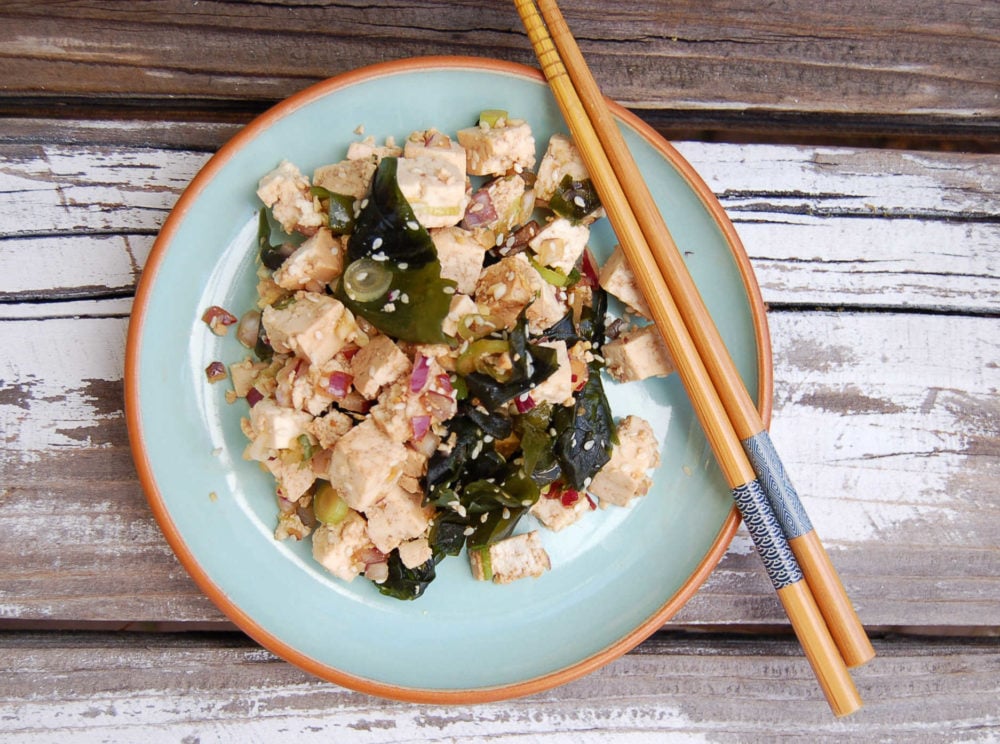
Ingredients
- 1 14 oz . package extra firm tofu cut into bite sized cubes
- 2 tablespoons dried wakame soaked in water for at least 10 minutes 4g // check the instructions on the back of the package. You may have to cook your wakame depending on the brand and where it's harvested from. If you're adding wakame that has been rehydrated, you want to add about 1/2 cup
- 3 tablespoons soy sauce
- 2 tablespoons sesame seeds 20g
- 2 teaspoons lime juice or lemon juice if it’s more convenient
- 2 garlic cloves minced
- ½ cup red onion 60g, finely diced
- ½ teaspoon ginger peeled and grated
- 2 green onions chopped - use the whole thing
Instructions
- Place the dried wakame in a medium sized bowl and cover it with two cups of water. Set this aside for now. Or cook it, depending on the instructions on the package.
- Rinse the tofu with water and then extract as much liquid as possible by placing it in a pie pan and stacking some plates on top of it. Let it sit like this for 20 minutes or so while you prepare the rest of the ingredients. Alternatively, you can use a tofu press. I use the plate method.
- In a large mixing bowl, add the soy sauce, sesame seeds, lime juice, garlic, red onion, ginger and red onions.
- Take the tofu out of the pie pan, cut into bite-sized cubes and add to the mixing bowl.
- Drain the water from the seaweed, rinse it with water and then press as much water out of it as you can. Add it to the mixing bowl with the tofu.
- Gently stir until all of the ingredients are combined. Eat right away or chill in the fridge. Serve cold.
Notes
Wising you a happy week. May you make your grocery list with intention and variety. May you also dabble in sea veggies.
7 Comments
Leave a Comment
Love the food that loves you back
Get instant access to thousands of plant-based recipes and meal plans, no credit card or perfection required.


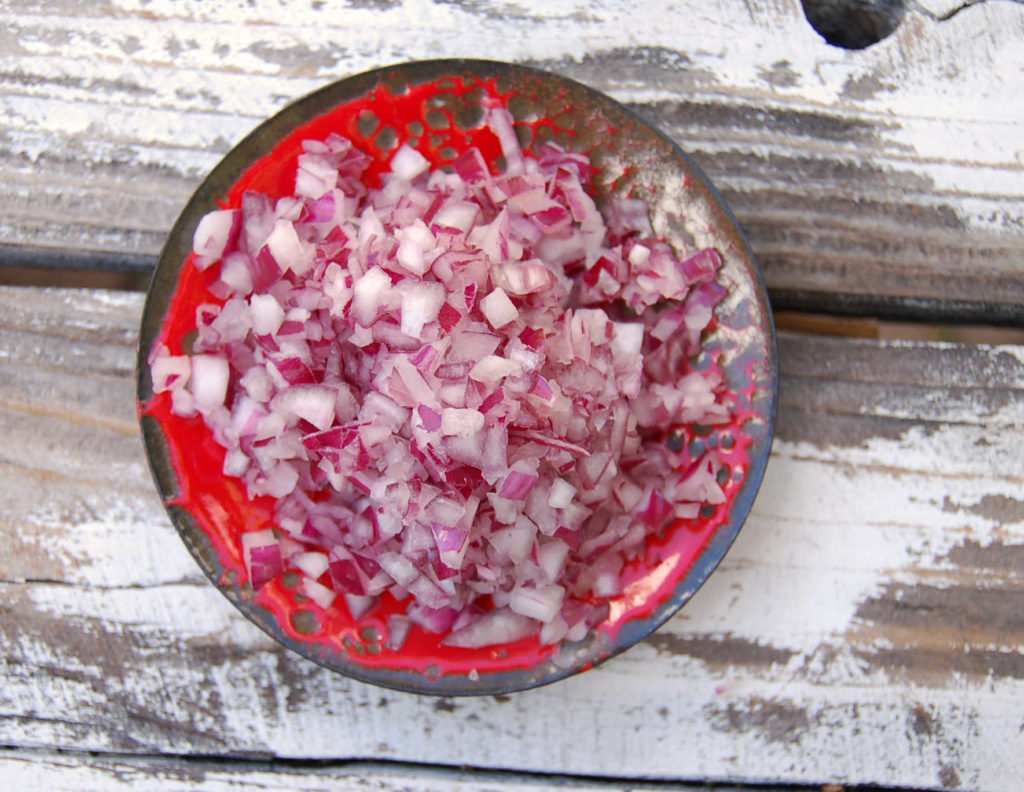



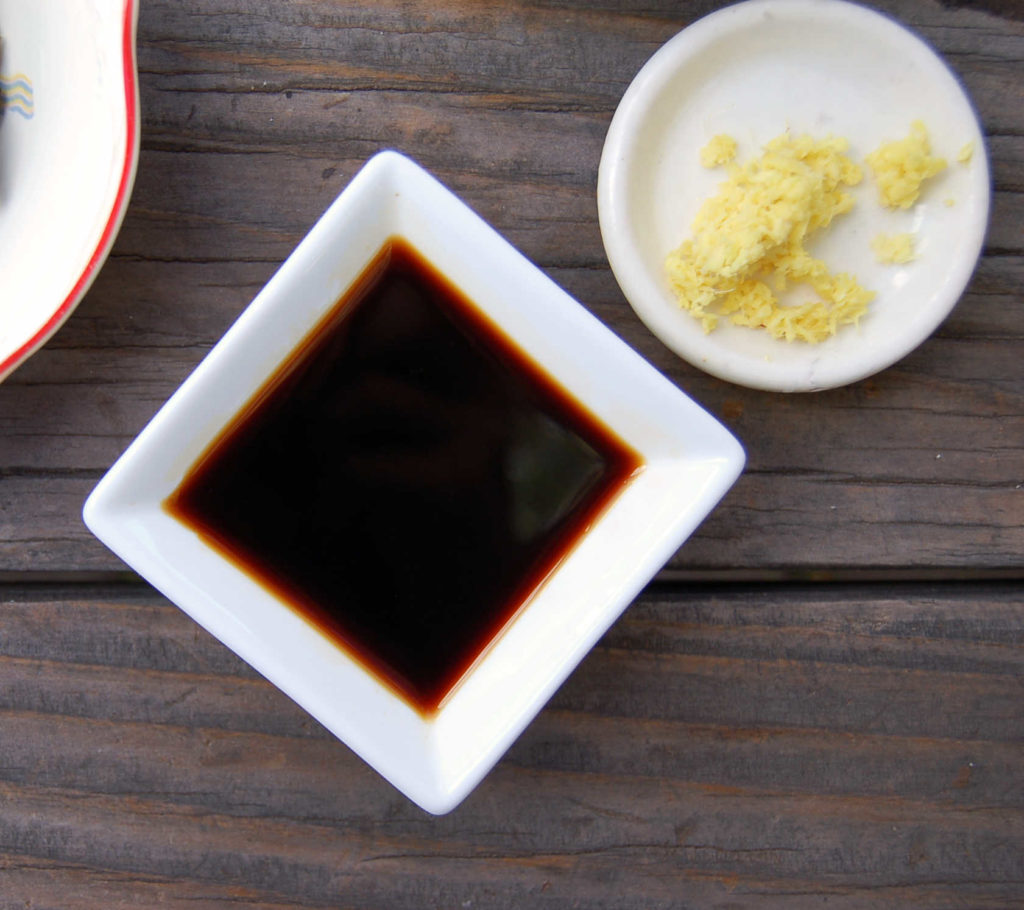



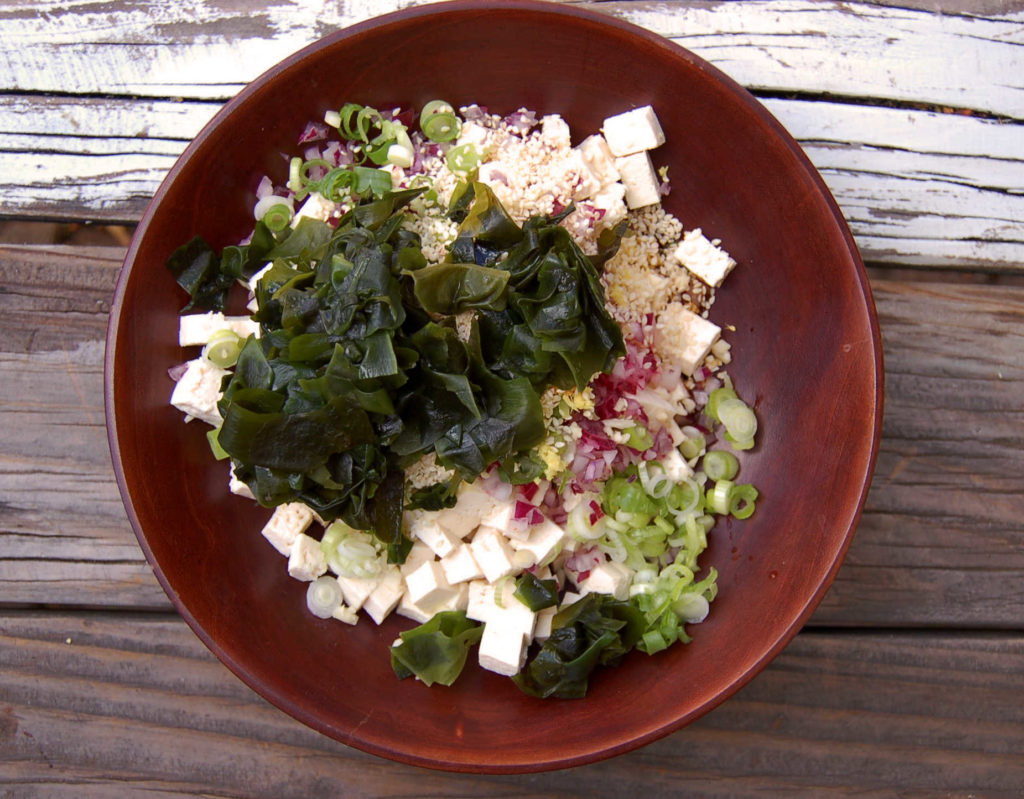

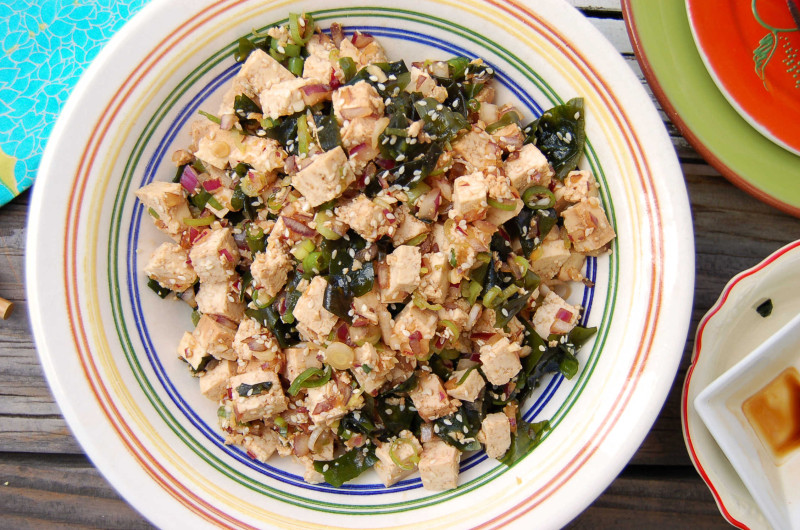


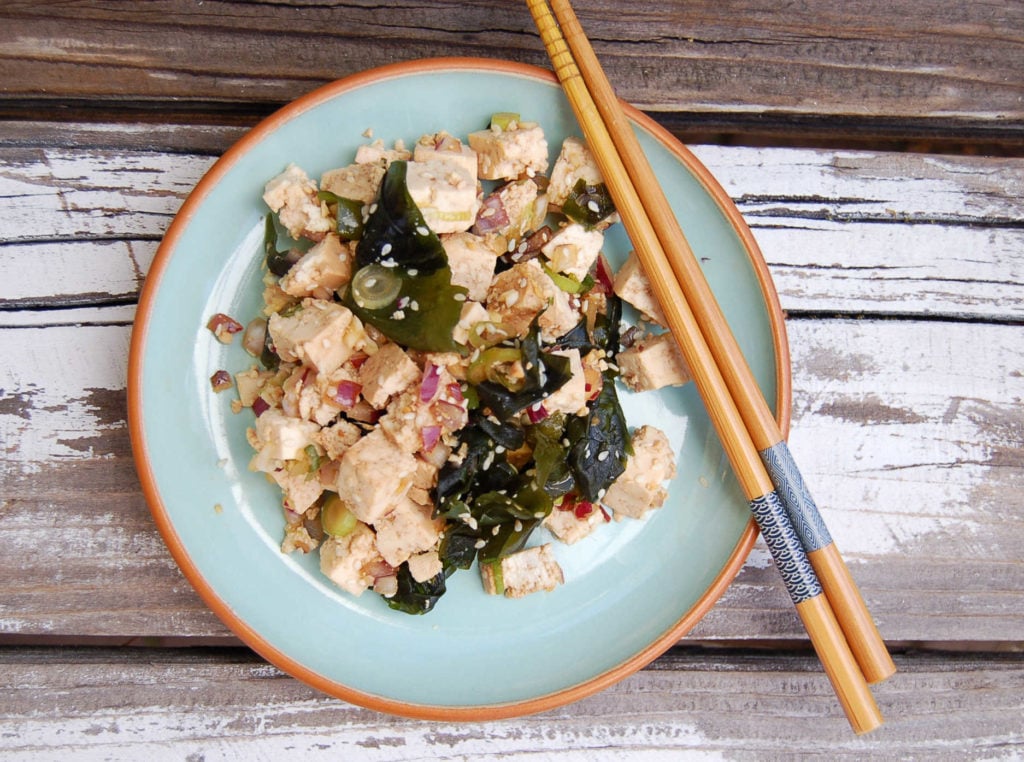
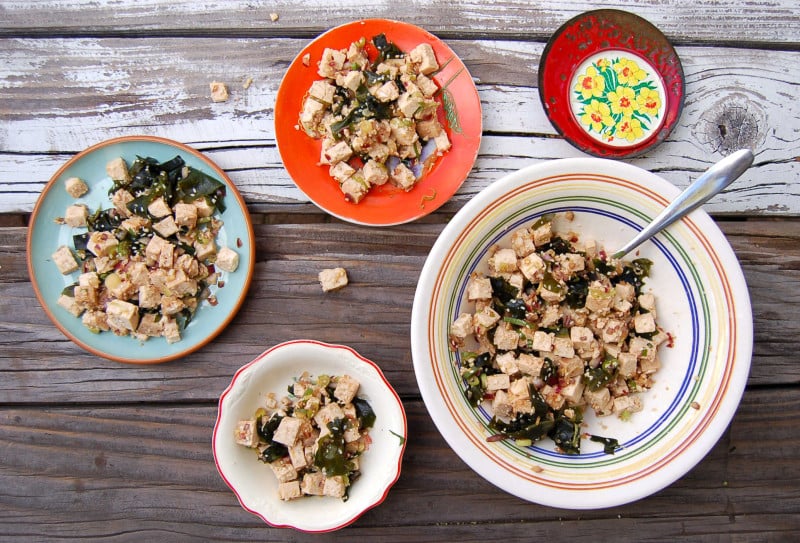
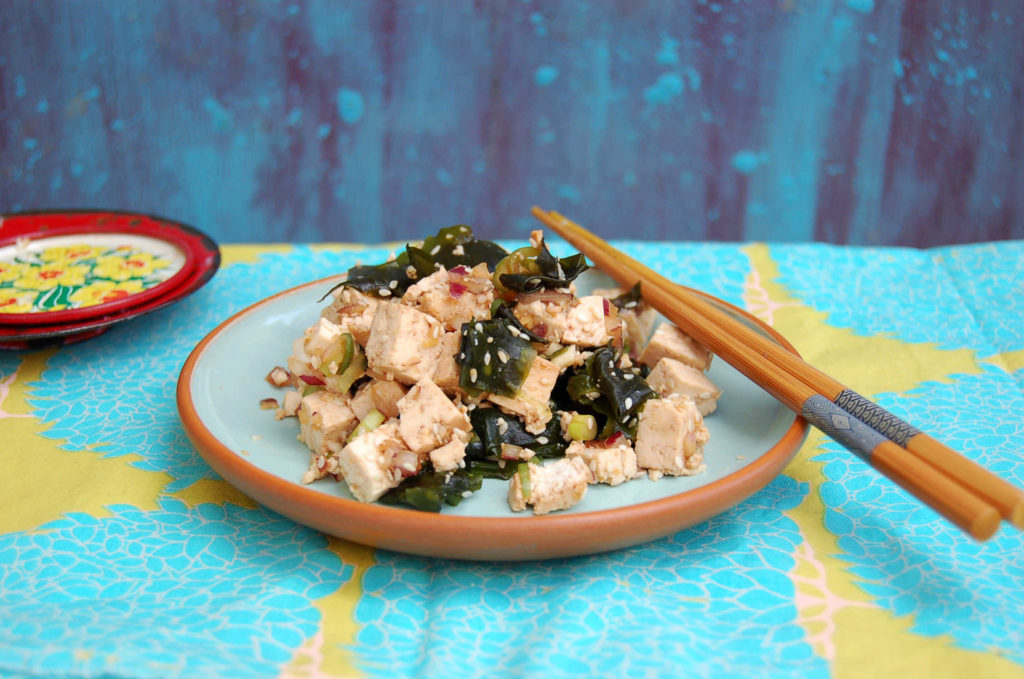
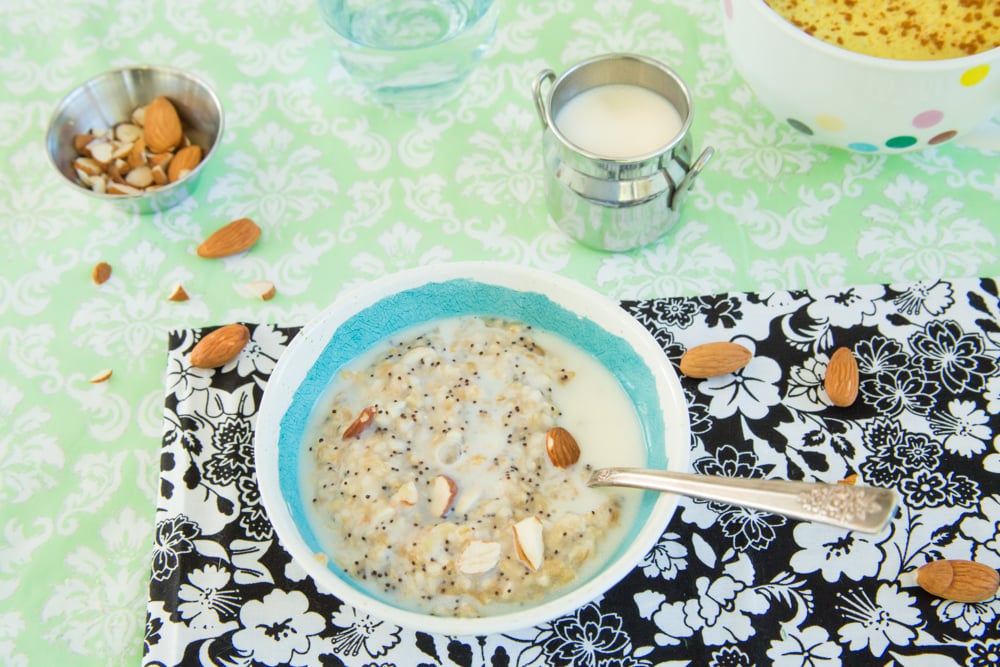
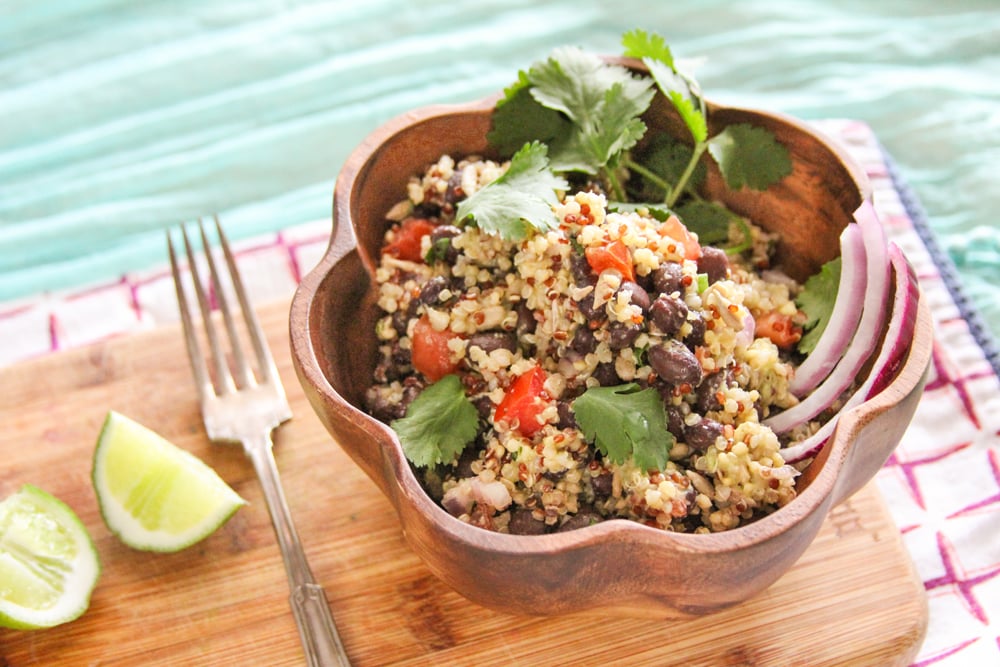
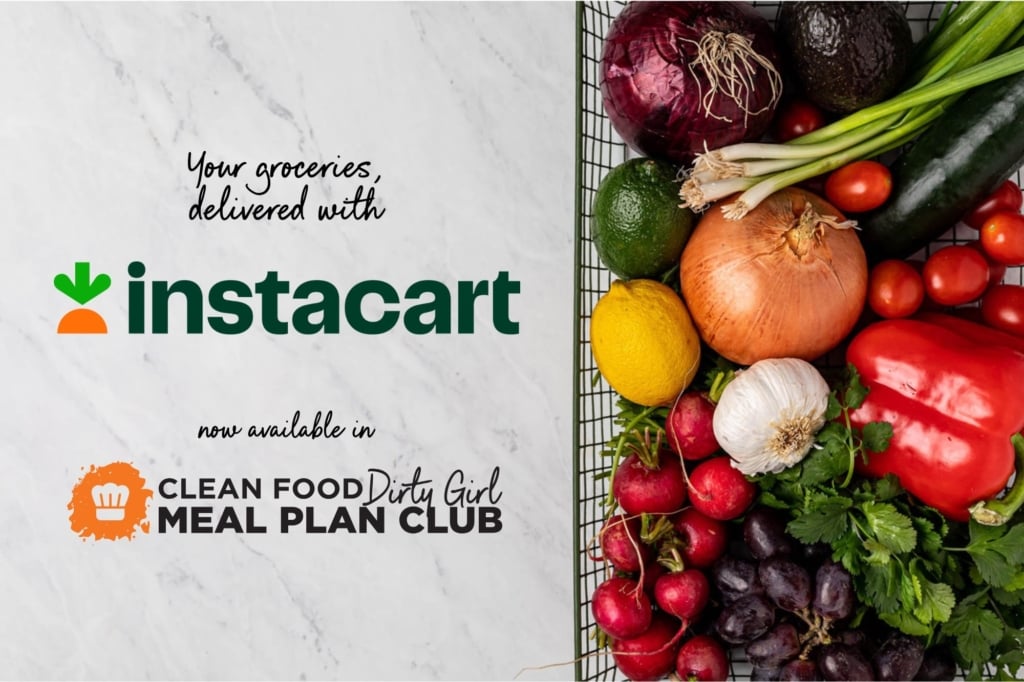









I really, REALLY want to love seaweed… I am going to try. I am not a fan of the “fishy” taste of seafood in general (which is why it was so simple to “give up”) but this post really encourages me to do so. Also, my seafood loving husband will appreciate having more of it in meals for sure – tofu or not. Also, thanks for the link to the Maine Coast Sea Vegetable – awesome and in my state. Great info. Thanks so much!!
Hey Carrie –
I know what you mean about the fishy taste!
I’m not super into fishy either, but this Poke recipe is DAMN good!
Try it out and then share what you htough tin our private Facebook group!
Here’s the link to join:
https://www.facebook.com/groups/cleanfooddirtygirl
xo
Molly
You are my inspiration.
Wow, I was introduced to eating seaweed as a little girl I had a Japanese friend we were both military brats but, I must say reading your article has really inspired me funny, witty and, very educational, Women Rock and,yes I will be looking forward to reading more of your articles it’s very hard to keep me entertained when it comes to nutritious articles and such but, I must say you hit the Mark!
I was so so obsessed with this when I first made it, my partner kept warning me I wouldn’t have any leftovers if I kept sampling it. This is my favorite recipe on the entire blog so far, thanks so much!
This is one of my favorites, too, Mel! Happy eating! xo
So yummy! Someone recently posted about this and I had all of the ingredients on hand except for red onion. No matter – just swapped in finely diced shallot and it was great! Fresh and flavorful! Will be perfect with some stir fried veggies and brown rice for dinner. Thanks for a fabulous recipe!